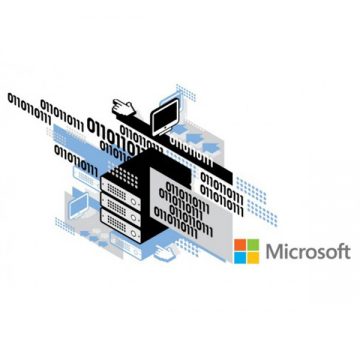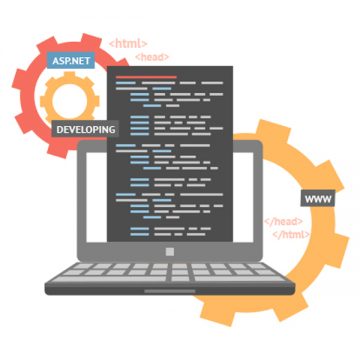Description
This course prepares students for the 70-642: Windows Server 2008 Network Infrastructure, Configuring exam. This course provides students with the knowledge and skills to configure and troubleshoot Windows Server 2008 and Windows Server 2008 R2 Sp1 Network Infrastructures.This course will cover networking technologies most commonly used with Windows Server 2008 and Windows Server 2008 R2 Sp1, such as DNS, DHCP, IPv4 and IPv6 network addressing, Network Policy server, Network Access Protection, and configuring secure network access. It also covers fault tolerant storage technologies, Network Storage, routing and remote access, monitoring and compliance updates, as well as other relevant technologies.
1.1 Intro
1.2 Installing Windows Servers – Part 1
1.3 Installing Windows Servers – Part 2
1.4 Installing Windows Servers – Part 3
1.5 Managing Server Roles And Features – Part 1
1.6 Managing Server Roles And Features – Part 2
1.7 Windows Server2008 Server Care Installations – Part 1
1.8 Windows Server2008 Server Care Installations – Part 2
1.9 Installing And Configuring Windows Services Summary
Module 2: TCP/IP Protocol Suite
2.1 Overview Of T C P I P – Part 1
2.2 Overview Of T C P I P – Part 2
2.3 TCPIP Addressing – Part 1
2.4 TCPIP Addressing – Part 2
2.5 Communication Types
2.6 Name Resolution – Part 1
2.7 Name Resolution – Part 2
2.8 Name Resolution – Part 3
2.9 Name Resolution – Part 4
2.10 Dynamic IP Addressing
2.11 TCPIP Tools
2.12 TCPIP Protocol Suite Summary
3.1 Overview Of I Pv4 Communication – Part 1
3.2 Overview Of I Pv4 Communication – Part 2
3.3 Subnetting I Pv4 Networks – Part 1
3.4 Subnetting I Pv4 Networks – Part 2
3.5 Subnetting I Pv4 Networks – Part 3
3.6 Configuring I Pv4 Addressing Summary
4.1 Overview Of DHCP – Part 1
4.2 Overview Of DHCP – Part 2
4.3 Configuring DHCP Scopes And Options – Part 1
4.4 Configuring DHCP Scopes And Options – Part 2
4.5 Configuring DHCP Scopes And Options – Part 3
4.6 Managing The DHCP Database
4.7 Monitoring And Troubleshooting DHCP – Part 1
4.8 Monitoring And Troubleshooting DHCP – Part 2
4.9 Configuring IP Address Assignment Services Summary
5.1 Introduction To IPv6 – Part 2
5.2 Unicast IPv6 Addresses
5.3 Configuring IPv6 – Part 1
5.4 Configuring IPv6 – Part 2
5.5 Configuring IPv6 Addressing Summary
6.1 Overview Of DNS – Part 1
6.2 Overview Of DNS – Part 2
6.3 Configuring The DNS Server Role – Part 1
6.4 Configuring The DNS Server Role – Part 2
6.5 Configuring The DNS Server Role – Part 4
6.6 Configuring The DNS Server Role – Part 5
6.7 Manage And Troubleshooting DNS
6.8 Migrating From WIN To DNS
6.9 Configuring Name Resolution Services Summary
7.1 Introduction To File Services
7.2 Controlling Access To File Services – Part 1
7.3 Controlling Access To File Services – Part 2
7.4 Overview Of Storage Management
7.5 Storage Management With File Server Resource Manager – Part 1
7.6 Storage Management With File Server Resource Manager – Part 2
7.7 Storage Management With File Server Resource Manager – Part 3
7.8 Storage Management With File Server Resource Manager – Part 4
7.9 Storage Management With File Server Resource Manager – Part 5
7.10 Configuring And Managing Distributed File Systems – Part 1
7.11 Configuring And Managing Distributed File Systems – Part 2
7.12 Configuring And Managing Distributed File Systems – Part 3
7.13 Configuring And Managing Distributed File Systems – Part 4
7.14 Optimizing Access For Branch Offices
7.15 Configuring Printing – Part 1
7.16 Configuring Printing – Part 2
7.17 Configuring Printing – Part 3
7.18 Configuring Printing – Part 4
7.19 Configuring Printing – Part 5
7.20 Configuring File And Print Service Summary
8.1 Configuring Server Security Group – Part 1
8.2 Configuring Server Security Group – Part 2
8.3 Configuring Server Security Group – Part 3
8.4 Configuring Server Security Group – Part 4
8.5 Configuring Server Security Group – Part 5
8.6 Configuring Server Security Group – Part 6
8.7 Configuring Server Security Group – Part 7
8.8 Storage Security – Part 1
8.9 Storage Security – Part 2
8.10 Windows Firewall With Advanced Security – Part 1
8.11 Windows Firewall With Advanced Security – Part 2
8.12 Configuring And Troubleshooting IP Sec – Part 3
8.13 Configuring And Troubleshooting IP Sec – Part 4
8.14 Securing Windows Servers And Network Communications Summary
8.15 Configuring And Troubleshooting IP Sec – Part 1
8.16 Configuring And Troubleshooting IP Sec – Part 2
9.1 Remote Access Overview
9.2 Configuring Remote Access – Part 1
9.3 Configuring Remote Access – Part 2
9.4 Configuring Remote Access – Part3
9.5 Configuring Remote Access – Part4
9.6 Overview Of Network Routing – Part 1
9.7 Overview Of Network Routing – Part 2
9.8 Overview Of Network Routing – Part 3
9.9 Configuring Routing And Remote Access Summary
Module 10: Configuring Network Policy Services
10.1 Overview Of Network Policy And Access Services – Part 1
10.2 Overview Of Network Policy And Access Services – Part 2
10.3 Understanding Network Policies
10.4 Centralizing Authentication And Authorization – Part 1
10.5 Centralizing Authentication And Authorization – Part 2
10.6 Centralizing Authentication And Authorization – Part 3
10.7 Configuring Network Policy Services Summary
Module 11: Configuring Network Access Protection
11.1 Overview Of Network Access Protection
11.2 NAP Architecture
11.3 NAP Enforcement
11.4 NAP Policies – Part 1
11.5 NAP Policies – Part 2 Demo
11.6 Configuring NAP Summary
Module 12: Maintaining and Recovering Windows Server
12.1 Disaster Recovery For Windows Servers – Part 1
12.2 Disaster Recovery For Windows Servers – Part 2
12.3 Disaster Recovery For Windows Servers – Part 3
12.4 Disaster Recovery For Windows Servers – Part 4
12.5 Disaster Recovery For Windows Servers – Part 5
12.6 Disaster Recovery For Windows Servers – Part 6 Recovery Data
12.7 Configuring Update Management – Part 1
12.8 Configuring Update Management – Part 2
12.9 Configuring Update Management – Part 3
12.10 Configuring Update Management – Part 4
12.11 Maintaining And Recovering Windows Server Summary
12.12 Outro







Reviews
There are no reviews yet.